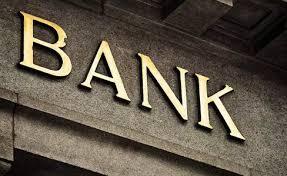Unveiling the Quest: What Is the Best Fixed Mortgage Rate?
When embarking on the journey of homeownership or refinancing, one of the critical questions that surfaces is, “What is the best fixed mortgage rate?” This comprehensive guide aims to demystify the concept of fixed mortgage rates, explore factors influencing their determination, and provide insights to help you navigate the landscape of mortgage rate options.
Understanding Fixed Mortgage Rates
Definition and Stability
A fixed mortgage rate refers to an interest rate that remains constant throughout the term of the loan. Unlike adjustable-rate mortgages (ARMs), where rates may fluctuate, fixed rates offer stability and predictability in monthly payments. This makes them a popular choice among homebuyers seeking consistent and manageable financial commitments.
Factors Influencing Fixed Rates
- Economic Conditions: The overall economic climate, including inflation rates and employment levels, can influence fixed mortgage rates. In times of economic growth, rates may rise, while economic downturns might see a decline.
- Creditworthiness: Individual creditworthiness plays a pivotal role in determining the interest rate offered to a borrower. Those with higher credit scores often qualify for more favorable rates.
- Market Trends: Mortgage rates are influenced by broader market trends, including movements in the bond market. Changes in the yield on government bonds can have a cascading effect on fixed mortgage rates.
- Loan Term: The term of the loan, such as 15, 20, or 30 years, can impact the interest rate. Generally, shorter-term loans may have lower rates, but monthly payments could be higher.
Seeking the Best Fixed Mortgage Rate: Key Strategies
1. Research and Comparison
Conduct thorough research to understand the prevailing fixed mortgage rates in the market. Utilize online tools, consult with lenders, and compare rates across different financial institutions.
2. Improve Credit Score
Enhancing your credit score can open doors to more favorable fixed mortgage rates. Prioritize timely payments, reduce outstanding debts, and address any inaccuracies in your credit report.
3. Evaluate Loan Terms
Consider the trade-offs between different loan terms. While shorter terms may offer lower rates, longer terms provide more extended payment flexibility. Choose a term that aligns with your financial goals.
4. Explore Lender Options
Engage with various lenders to explore the fixed mortgage rates they offer. Different lenders may have unique rate structures and terms, allowing you to choose an option that suits your preferences.
Decoding the Notion of “Best” Fixed Mortgage Rate
1. Individualized Nature
The concept of the “best” fixed mortgage rate is inherently individualized. What may be optimal for one borrower might not be the same for another. Consider your financial situation, risk tolerance, and long-term objectives.
2. Rate-Lock Considerations
Mortgage rates can fluctuate daily. When you find a rate that aligns with your goals, consider locking it in. Rate locks provide protection against potential rate increases before closing.
3. Total Cost Assessment
Rather than focusing solely on the interest rate, assess the total cost of the loan. This includes fees, closing costs, and any additional expenses associated with the mortgage. A lower interest rate may not necessarily equate to lower overall costs.
Conclusion: Navigating the Realm of Fixed Mortgage Rates
In the quest for the best fixed mortgage rate, it’s essential to approach the decision with a combination of research, financial awareness, and a clear understanding of your unique circumstances. Fixed mortgage rates offer stability and predictability, making them an attractive option for many homebuyers. By leveraging the strategies outlined and embracing the individualized nature of the decision, you can navigate the landscape of fixed mortgage rates with confidence, ultimately securing a rate that aligns seamlessly with your homeownership or refinancing aspirations.
Post time: Nov-15-2023





